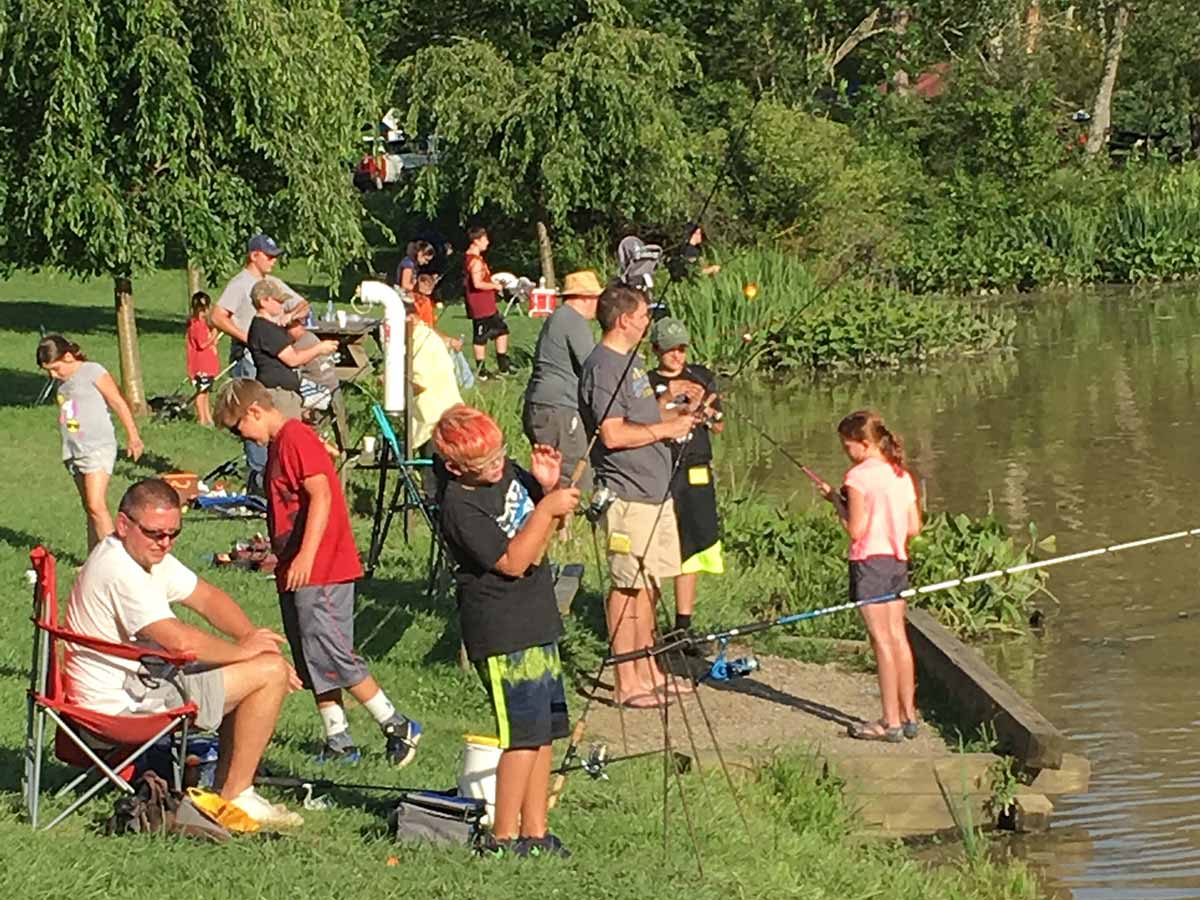
Anglers participate in a youth mentored catfish program near Pittsburgh in 2017.
Photo: PA Fish and Boat Commission
Lions and tiger and bears? Forget about it.
We’re talking channel cats, walleyes and muskies.
All have or are about to get some attention across Pennsylvania. Unfortunately, not all of it’s good.
But let’s start with the positive.
The Pennsylvania Fish and Boat Commission is offering a couple of special youth mentored catfish opportunities for families. One is near Pittsburgh, the other Philadelphia.
The first is set for Saturday and Sunday, July 28 and 29, in North Park in Allegheny County.
From 6 to 11 p.m. on Saturday, youngsters with a voluntary fishing license or mentored youth permit and their adult mentors – who must also have a fishing license – can fish for freshly-stocked channel catfish. Fish from 14 to 24 inches are being released for the weekend.
The fishing resumes from dawn until 11 p.m. the next day.
All of the action will be centered around the Boathouse Pond portion of North Park Lake.
Commission staff will be on hand each day, together with volunteers, to help those who need it.
The Philadelphia area event, meanwhile, is set for Saturday and Sunday, Aug. 4 and 5, at the Children’s Pond, at Nockamixon State Park in Quakertown.
It will work the same way.
From 6 to 11 p.m. Satureday and from dawn to 11 p.m. Sunday, youth and mentors – again properly licensed – will be able to fish for stocked channel cats, with help available both days.
A “catfish expo” will be held from 4 to 6 p.m. on Saturday at both events. Visitors will have the opportunity to talk to commission staff about catfish biology and management. Most notably, they’ll learn a bit about how to catch, clean and cook catfish.
The catfish expos are open to all anglers, regardless of whether they’re fishing in the mentored youth events.
The goal at both is largely to reach “city” kids.
“Youth can never have enough opportunities to fish,” said commission executive director John Arway. “These two programs are specifically designed to show kids who live in urban environments that there are good fishing opportunities close to their cities.”
Now, the bad news.
Two lakes that get stocked – one with walleyes, another with muskies – probably won’t get any more fish moving forward.
Poor survival is the reasons.
Colver Reservoir is a 73-acre lake in Cambria County. The commission has planted walleyes in it for years in an attempt to produce a fishery.
Biologists surveyed it last year, looking to find some. They didn’t, not to any big degree anyway.
“In 2017 we conducted a survey with trap nets in mid April and had poor catches. We wanted to go back during the spawning season (this year), when they are more susceptible to capture,” said Mike Depew, a biologist in the commission’s area 8 office in Somerset.
That didn’t turn up many fish either, though,
Crews captured just 10 walleyes. The catch rate – fish per hour – equaled 6.25.
The commission’s statewide walleye management plan says a lake has to produce 18 legal-sized walleyes or 24 per hour to stay on the stocking list.
That – together with the fact that an angler survey in May found few people actually seeking walleyes – is likely to bring this experiment to an end.
“Stocking of walleye is likely to be discontinued,” Depew said.
The same thing is expected to happen at Loyalhanna Lake in Westmoreland County, only in regards to muskies.
Loyalhanna is a 480-acre U.S. Army Corps of Engineers lake. The commission surveyed it in 2014 and 2016 looking for muskies. It went back again this year.
They found one particular fish with a liking for trap nets.
“We only captured one tiger musky, but we captured him twice during the survey,” Depew said. “We actually captured this fish in 2014 when he was 35 inches, we caught it again in 2016 when he was 37.5 inches, and we caught it again at 38 inches in 2018.”
Biologists know it was the same fish because, for the purpose of this study, they’ve injected PIT tags, or small radio transmitters, into muskies as theyv’e caught them.
“Each tag has its own code,” said Rick Lorson, area 8 fisheries manager.
No other muskies, purebreds or tigers, turned up, though, despite regular stockings.
So stocking is probably going to stop, Depew said.
No mentored catfish, but other fish
One other bit of good news?
If the musky situation at Loyalhanna Lake isn’t poor, things look for better for a few other species.
“We did catch over 900 crappies in our trap nets, with fish up to 14 inches landed,” Depew said.
About 15 percent of those fish exceeded 9 inches.
Bluegills were also abundant with 586 landed. All were between 2 and 8 inches, with 27 percent exceeding 7.
“Catfish numbers still look great, with over 200 combined channels and white catfish landed. Channels ranged from 7 to 31 inches and whites from 4 to 19 inches,” Depew said.
“Good numbers of big channels seem to be available, as each net seemed to have at least one fish over 25.”
Want to see more? Check us out on Facebook, Twitter and Instagram.








